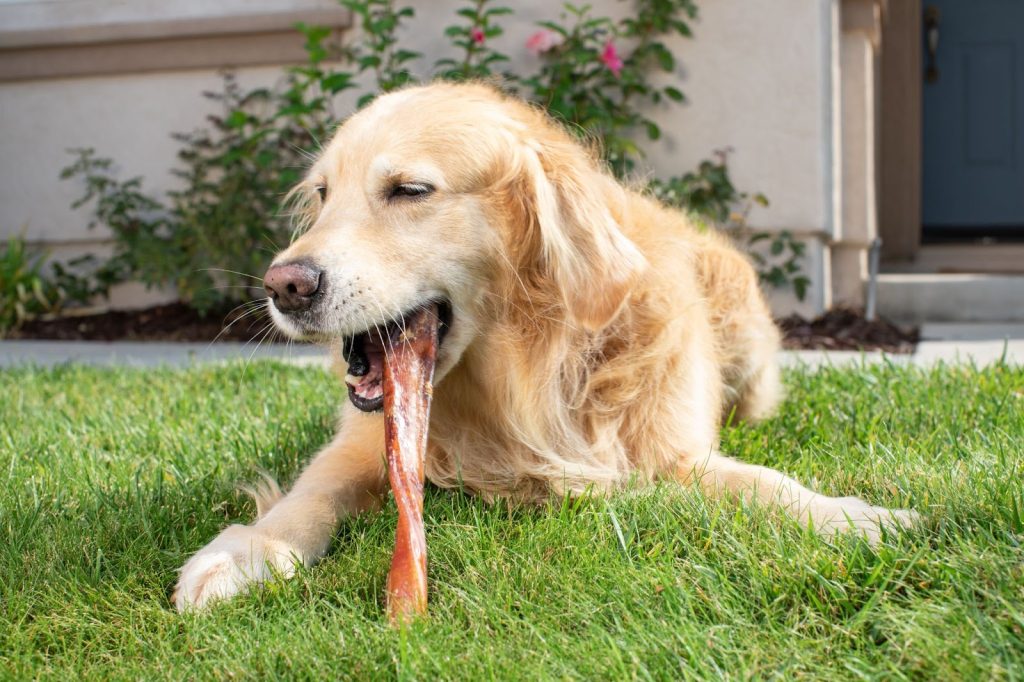When it comes to our furry best friends, parasites are often one of our biggest concerns. From fleas to worms, to other viral infections, a lot can go wrong for a dog. Worms can be deadly depending on what type. But how do you tell if your dog has worms? Don’t worry, Barking Buddha Pet has you covered. Read on to learn more about these parasites.

Different Types Of Worms In Dogs
Depending on the type of worm you are looking for, there can be different signs. We’ll look first at what the most common ones are, then explain how you can identify them better. However, if you are ever concerned about your dog having worms, you should talk to your vet. They can easily run tests and confirm any suspicions and help you treat your pup.
Roundworms: These are the most common intestinal worms found in dogs. They are long, white, or pale worms that resemble spaghetti. Puppies can acquire them from their mother or through contaminated environments.
Hookworms: These worms have hook-like mouthparts and feed on blood from the dog’s intestinal lining. Dogs can contract hookworms through ingestion, skin contact, or from their mother during nursing.
Whipworms: Whipworms reside in the large intestine of dogs. They are thin, whip-like worms with a larger posterior end. Dogs typically acquire whipworms by ingesting the infective eggs present in contaminated soil or feces.
Tapeworms: Tapeworms are segmented worms that can reach several inches in length. Dogs usually get tapeworms by ingesting intermediate hosts like fleas, rodents, or infected meat.
Heartworms: Unlike the other worms mentioned, Heartworms reside in the dog’s heart and blood vessels. They are transmitted through mosquito bites. Heartworm infection can be life-threatening if left untreated.
Signs That Your Dog Has Worms
The symptoms of worms in dogs can vary depending on the type and severity of the infestation. However, it’s important to watch out for these symptoms. Because you’ll want to treat any parasites quickly, being able to identify these signs is critical.
Weight Loss: Worms can deprive the dog of essential nutrients. This may cause unexplained weight loss or a failure to gain weight in puppies.
Poor Coat Condition: Infested dogs may have a dull, dry, or scruffy-looking coat. While there may be quite a few other reasons why your dog’s coat is dull or itchy, a lack of nutrients is common. That can be caused by poor food, or by worms. Or even a combination of the two. So be sure to check with your veterinarian before you just pump some salmon oil onto the problem.
Diarrhea or Bloody Stool: Worms can cause gastrointestinal upset, resulting in diarrhea. In some cases, blood may be visible in the stool. Again this is another condition that may have other causes. However, bloody stool means you should take a trip to the vet.
Swollen Belly: Puppies or dogs with a heavy infestation of roundworms may develop a pot-bellied appearance due to the accumulation of worms in the intestinal tract. This is more apparent in puppies and smaller breeds.
Lethargy and Weakness: Worms can sap a dog’s energy, leading to increased lethargy and a general lack of enthusiasm. While many dogs will slow down with age, worms will often appear in big changes quickly. This is because they are constantly draining your dog of nutrients.
Appetite Changes: Dogs with worms may experience a drastic change in appetite or a sudden increase in hunger due to parasites. Some dogs will even refuse to eat because they feel ill.
Scooting or Itching: If you see your dog scooting across the carpet, it might have worms. Some types of worms, such as tapeworms, can cause itching around the dog’s anus, leading to scooting or dragging their rear end on the ground. This can also be a sign of anal gland problems. Your vet or groomer can help you identify the differences.
Visible Worms: In some cases, you may actually see worms or segments of worms in the dog’s stool or around the anus. This is more common with tapeworms.
It’s important to note that some dogs may show no obvious signs of worms, especially in the early stages of infestation. Regular fecal examinations by a veterinarian and preventive deworming protocols are essential to detect and address worm infestations in dogs, even when symptoms are not readily apparent.

How To Treat A Dog With Worms
Once you identify what type of worms you are dealing with, you can start treatment. However, it’s best to talk to your vet about this if you are unsure. There are deworming medications that you can get at your local pet store for common types of worms. And if you see an infestation you can, in fact, treat your dog without a prescription.
However, dangerous worms like heartworms can be harder to identify. Regular check-ups can go a long way to prevent any of these parasites from getting out of control. Your vet should be able to give you a preventive plan for your pup.
Conclusion
Being aware of the signs and symptoms of worm infestations in dogs is crucial for every responsible pet owner. Detecting worms early can help ensure prompt treatment and prevent potential health complications for our beloved canine companions.
Keep a close eye on your dog’s behavior and overall well-being, looking out for indicators such as weight loss, poor coat condition, diarrhea, vomiting, a swollen belly, lethargy, poor appetite, scooting or itching, and the presence of visible worms or worm segments.
Remember that some dogs may not display obvious signs, underscoring the importance of regular veterinary check-ups and fecal examinations.

